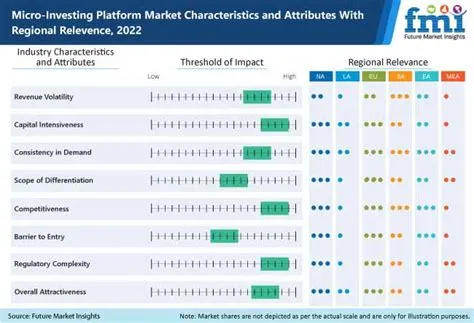Hey there, fellow investors! Ever wondered how people in rural and developing areas are getting in on the investment game? It’s not always about Wall Street and fancy brokerage accounts. In fact, some of the most exciting investment trends are happening far from the gleaming skyscrapers, right in the heart of communities often overlooked. Let’s dive into seven major micro-investing-tools">micro-investing-strategies">micro-investing-risks">micro-investing-platforms">micro-investing-basics">micro-investing trends shaping financial landscapes in these regions.
1. The Rise of Mobile-First Investing: Remember the days when you needed a desktop computer and a hefty brokerage fee to invest? Those days are fading fast, especially in rural areas. Smartphones are becoming ubiquitous, and with them comes access to mobile-first investing platforms. These apps are designed for simplicity, often requiring minimal technical knowledge and offering low minimum investment amounts. Think of it as putting a stock market in your pocket – incredibly empowering, right? This democratizes investing, giving previously excluded populations a chance to participate.
2. The Power of Peer-to-Peer Lending: Ever needed a small loan to jumpstart a business or cover unexpected expenses? Traditional banks can be tricky to navigate, especially in underserved communities. Enter peer-to-peer (P2P) lending platforms. These connect borrowers and lenders directly, often cutting out the middleman and offering more flexible terms. For investors, this means potentially higher returns than traditional savings accounts, and for borrowers, it’s a lifeline to financial opportunity. It’s a win-win, a beautiful example of community-based finance.
3. The Growing Popularity of Micro-Insurance: Life throws curveballs, and nobody’s immune. Micro-insurance provides affordable protection against unexpected events like illness or crop failure. For investors, it represents a chance to participate in a market serving a critical need, often offering steady, reliable returns. Think of it like spreading risk across a large pool of people – a safety net for the community, and a sensible investment.
4. The Embrace of Agricultural Investments: In many rural and developing areas, agriculture is the backbone of the economy. Investing in agriculture, whether it’s through crowdfunding for small farms or investing in companies focused on agricultural technology, is gaining traction. It’s not just about planting seeds; it’s about investing in food security and economic growth. It’s a tangible way to see the impact of your investment, making it incredibly rewarding.
5. The Impact of Digital Financial Services (DFS): Mobile money platforms like M-Pesa have revolutionized financial access in many developing countries. These platforms are not just for transactions; they’re also gateways to micro-investing. They provide a safe and convenient way to save and invest small amounts of money regularly. Think of it as a financial highway, connecting people to opportunities they never had before.
6. The Rise of Social Impact Investing: More and more investors are looking beyond pure financial returns. Social impact investing focuses on investments that generate positive social and environmental outcomes alongside financial gains. This trend is particularly prominent in developing regions where investments can address issues like poverty, lack of education, or environmental degradation. It’s investing with a conscience, a chance to make a real-world difference.
7. The Expanding Role of Government Initiatives: Governments are recognizing the importance of financial inclusion and are taking steps to encourage micro-investing. This includes initiatives to improve financial literacy, provide subsidies for micro-investing platforms, and create a supportive regulatory environment. It’s a powerful combination – private innovation meeting public support to create a truly inclusive financial system.
Conclusion:
The micro-investing landscape in rural and developing regions is dynamic and full of potential. These trends show a clear shift towards greater financial inclusion, empowering individuals and communities to participate in the global economy. It’s a testament to human ingenuity and the power of technology to overcome barriers and create opportunities. While risks exist in any investment, the potential for both financial and social returns makes these trends truly compelling. Are you ready to explore these exciting opportunities? It’s time to see how you can be part of this positive change!
FAQs:
1. What are the risks associated with micro-investing in developing regions? Risks include market volatility, currency fluctuations, and the potential for fraud. Diversification and thorough research are key to mitigating these risks.
2. How can I find reputable micro-investing platforms? Look for platforms that are regulated, transparent, and have a proven track record. Read reviews and compare offerings before investing.
3. What are the minimum investment amounts typically required? This varies greatly depending on the platform and investment type, but many platforms offer extremely low minimums, making them accessible to a wide range of investors.
4. Is micro-investing suitable for beginners? Yes, many micro-investing platforms are designed with beginners in mind, offering user-friendly interfaces and educational resources. However, it’s always advisable to start with a small amount and learn as you go.
5. How can I learn more about social impact investing in developing regions? Research organizations that specialize in impact investing and explore opportunities through crowdfunding platforms or socially responsible investment funds.

